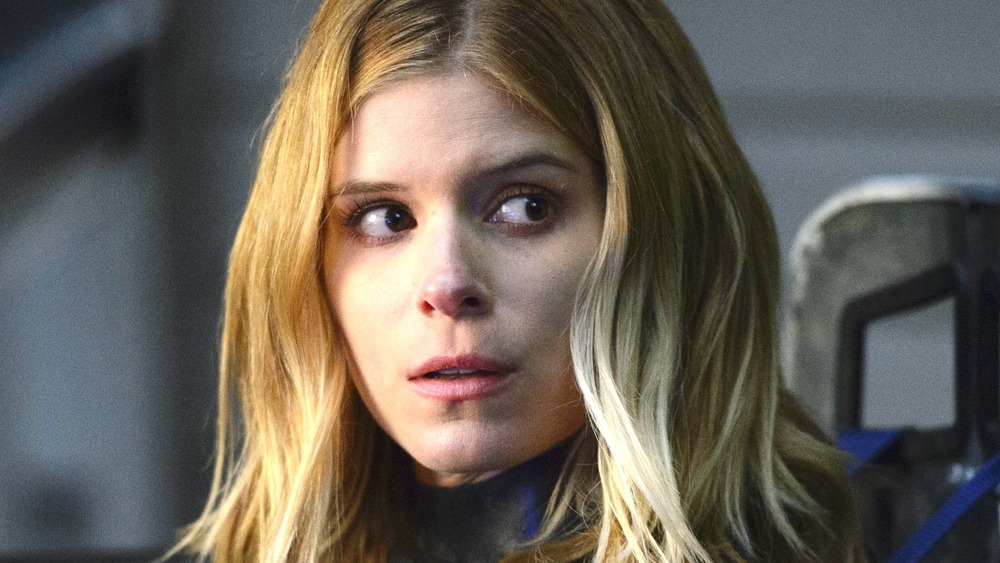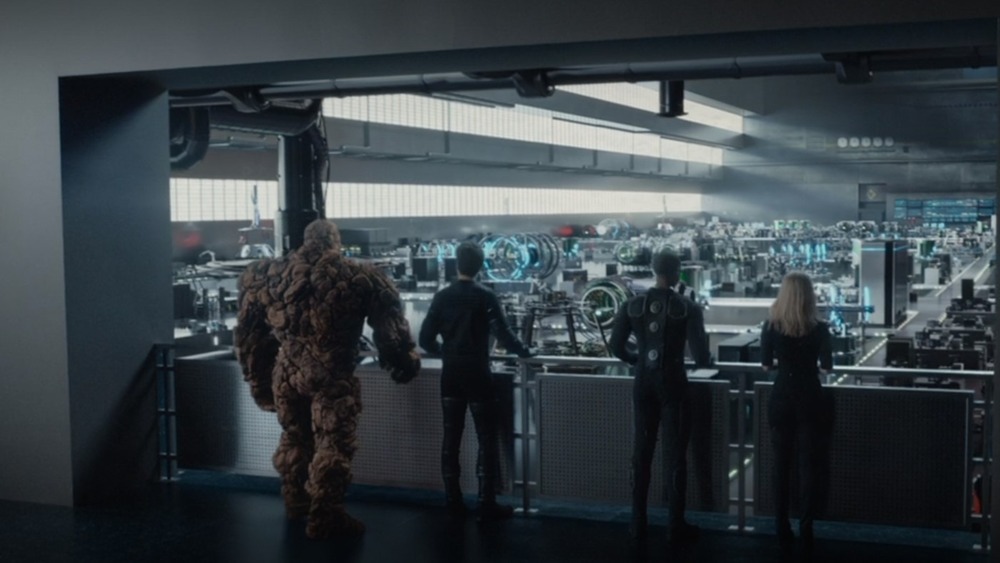The Ending Of The Fantastic Four Explained
Fantastic Four, a.k.a. the universe's gift to phonics, Fant4stic, was a famously troubled production. Like its namesake team, it started out with good if hasty intentions before crashing spectacularly. Like Mister Fantastic, its premise is stretched inhumanly thin. Like Ben Grimm, it gets rocky all over halfway through the movie. Like Sue Storm, nobody saw it. Like Captain America, who was not in that film, we could do this all day. It's difficult to talk about the ending of Fantastic Four without going into the already discussed-to-death details of the film's rough path to existence. In the months and years following its release, stories started making the rounds about Fox's initial excitement at the prospect of a gritty, bleak take on Marvel's first family, followed by a case of cold feet when the higher ups saw just what that might look like. Director Josh Trank, still basking in the glow of being the youngest director to debut a movie in the number one spot at the box office, saw helming the picture as "the most rebellious thing to do," according to an interview with Polygon. He wanted to take one of the most traditionally peppy IPs in the Marvel library and turn it into body horror. Executives, by his recollection, were uncomfortable when he showed off what he'd made so far.
And that, in a nutshell, is how Fantastic Four wound up with a rewritten ending, allegedly minus the director's input and initial vision of an entire film wrapped around "the metaphor of these characters crawling out of hell."
No Sue romance, Reed doesn't dance, Ben Grimm gets no underpants
"I think the four of us should have a name," Reed Richards, played by Miles Teller, shakily declares in the closing moments of 2015's Fantastic Four. "Why would we need a name?" Sue (Kate Mara) responds. "Because we're a team now, and there's four of us, so we should come up with a name for it," Reed explains. And that's just about the high water mark in terms of logic in the movie's finale.
Fantastic Four's third act was, to the best anyone can surmise, created outside of Trank's control in an effort to make the film more "superhero-y." It certainly hit all the right beats — an existential bad guy threat, a beam of CGI shooting into the sky, a fight in which all of the main characters get down to the business of shooting fire and turning invisible and whatnot, but critics and audience members were quick to point out that it doesn't mesh with the rest of the movie. The villain gets blasted into a nebulous demise, and the team gets a base of operations to gaze upon as they inch their way towards an agonizing name drop that never quite happens. It's all pretty far removed from the sequence 45 minutes earlier in which a bloodied Reed Richards looks back in horror to see that his pinned legs have been stretched ten feet across the burning remains of his lab.
Trank has stated that his original script would have focused less on CGI combat and more on the personal journey that the heroes go on, accepting their place as permanently transformed quasi-freaks. Maybe that would have gone over better with viewers. Then again, maybe Stan Lee was right when, as EW reported, he said that the movie failed because he didn't get a cameo.

